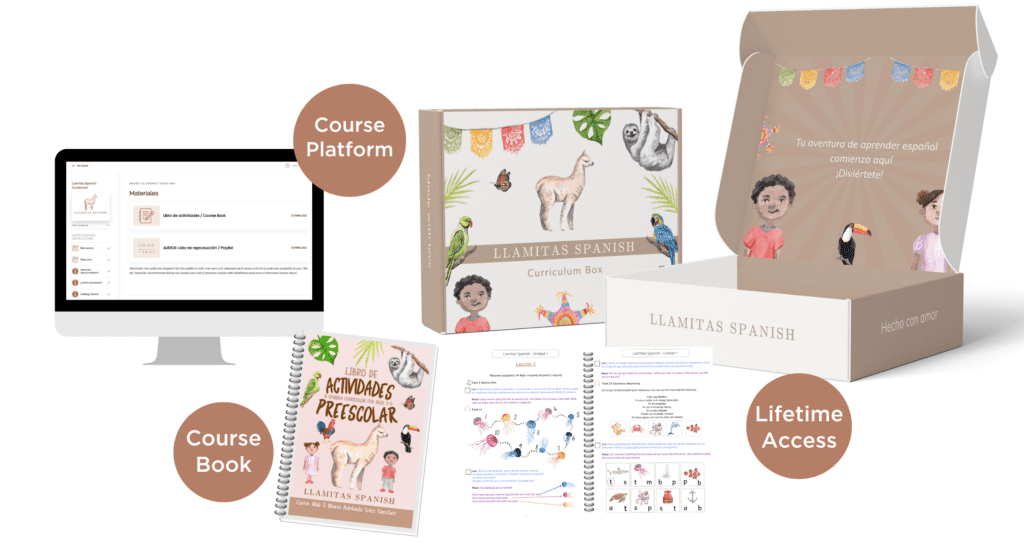In this post: Learn how you can use Spanish Montessori 3-part cards in your Spanish lessons to promote language learning.
Looking for Spanish Montessori materials to incorporate into your lessons?
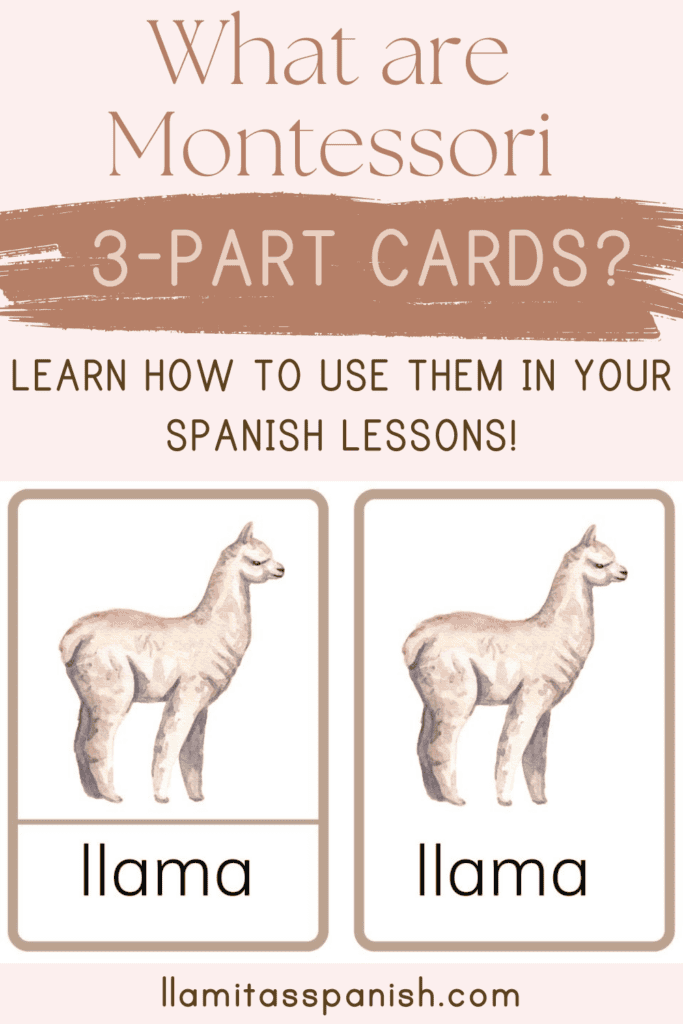
At Llamitas Spanish®, we embrace the Montessori method’s hands-on, student-led approach to education and believe it offers many benefits for learning a second language. While it’s not strictly Montessori, our thematic Spanish curriculum incorporates many Montessori elements.
One of these Monti-inspired resources included with our Level 1 Curriculum are our 3-part Spanish cards. If you aren’t familiar with Montessori 3-part cards, they’re different from regular flashcards and are a great resource for literacy development and language acquisition.
Read on to learn all about our 3-part Spanish Montessori cards and how to use them right here!
Table of Contents
What are Montessori 3-Part Cards?
Montessori 3-part cards aren’t just your standard flashcards—they’re a more versatile and intentional alternative. You may also have heard them referred to as nomenclature cards or Montessori classification cards.
While regular flashcards typically consist of a single card for each word—with or without a picture—Montessori classification cards essentially have three cards for each word.
The three parts of Montessori nomenclature cards include:
- Control Card: word and image together
- Object Card: image only
- Label Card: word only

With 3-part cards, children can begin to explore how language connects to objects or images in a very hands-on, natural way that is key to the Montessori method. They start to see the bigger of how they can use words to describe the world around them.
While we’ll get more into the benefits of 3-part cards shortly, you can already see how they offer more room for exploration than a set of standard flashcards where the word and image are generally fixed in place on one card.
Related post: Montessori Spanish Lessons for the Early Years
Who are Montessori 3-Part Cards for?
One thing we love about Montessori 3-part cards (and Montessori education in general) is the flexibility! These cards are best with children ages 2 to 8, but they can be used with older kids as well.
For instance, younger kids like preschoolers will benefit especially from engaging with the object card and control card. With these, they’ll begin connecting the sound of the word with the image and the letters on the card to build phonological awareness, an important step toward reading.
Older kids and emergent readers will get a lot of use out of the label card and control card as they build their vocabulary, reading fluency, and spelling skills.
Related post: How to Montessori at Home
How to Use Montessori 3-Part Cards in Spanish Lessons
Three-part Montessori cards are versatile, so there’s no one “right” way to use them for your Spanish lessons. However, there is a basic process generally followed in Montessori classrooms that you may want to use as a starting point.
Here’s a step-by-step guide to using 3-part cards in your Spanish lessons:
1. First, present a handful of control cards to your child in a row from left to right (the correct reading direction for Spanish) as you read each word to them. We don’t recommend using too many cards at once, as this might overwhelm your child.
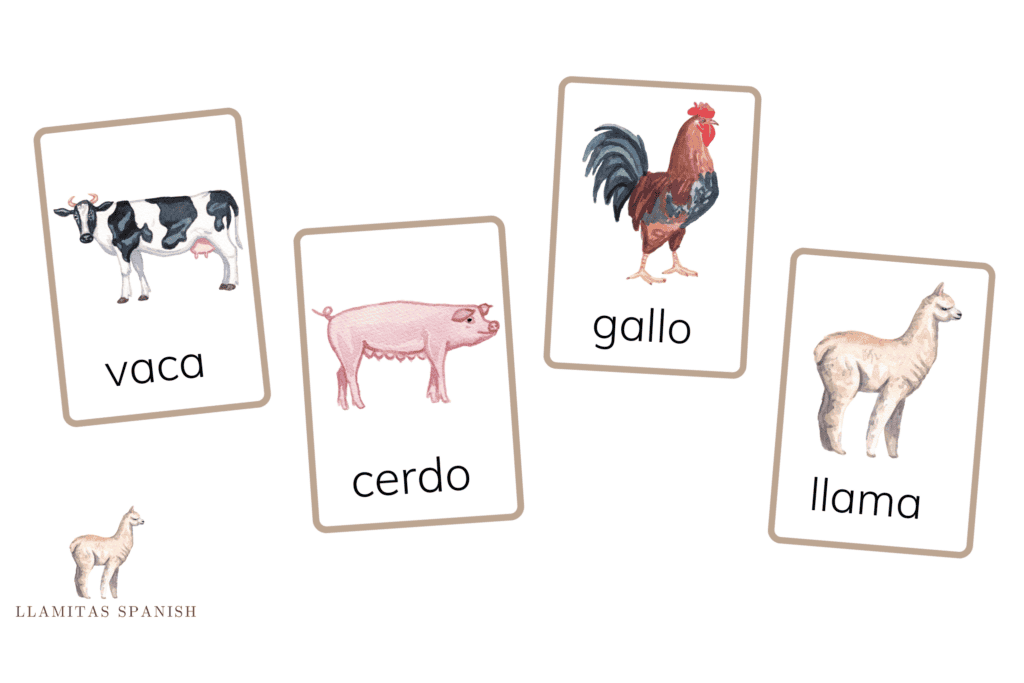
2. Next, set out the object cards for your child to match to the control cards. You might encourage them to practice saying the word as they identify each matching object card if they can remember, although this isn’t a necessary step if you’re sticking to the Montessori method for presenting the cards.
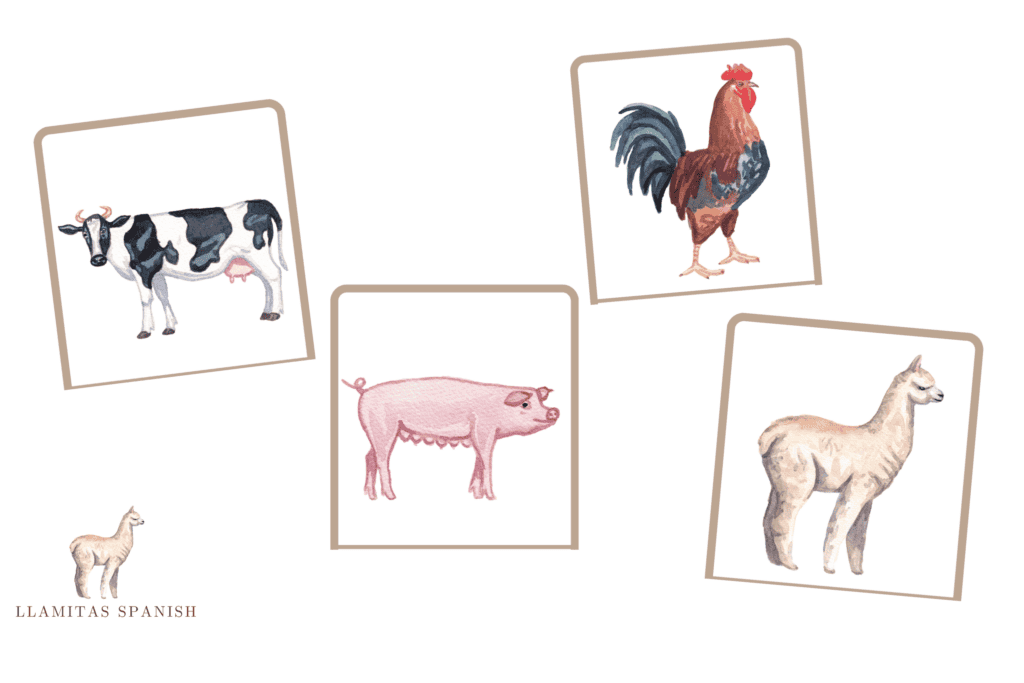
3. Then, you can bring out both the label card and object card for your child to match to the control card. They may place the cards on top of the control card or next to it—their choice! Younger kids may need you to read each label to them so they can match it to the control card, while older kids can practice reading on their own.
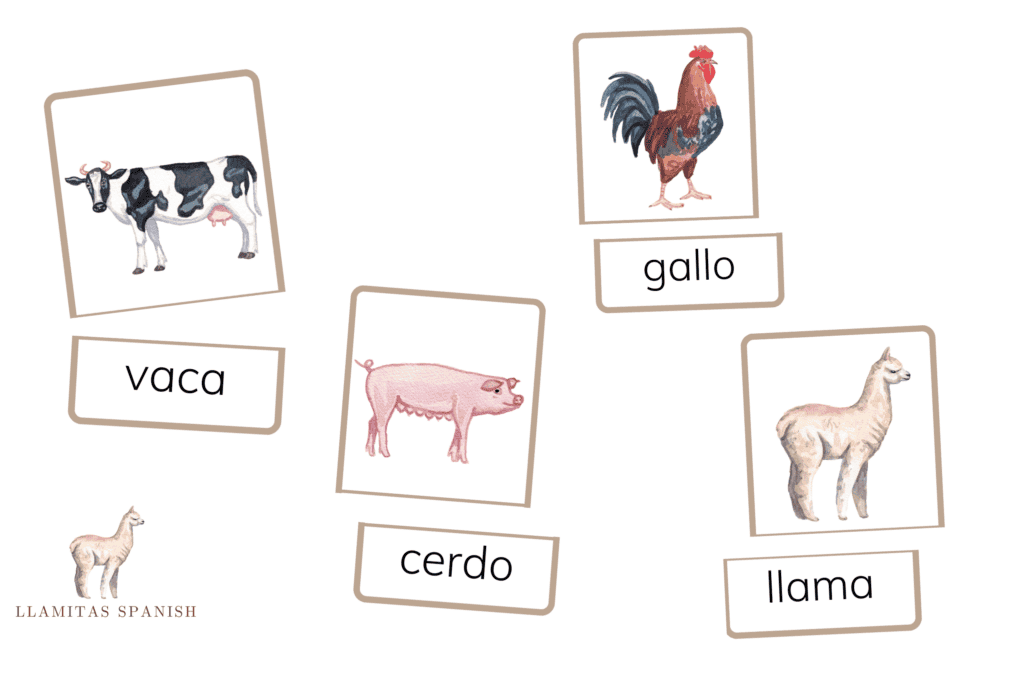
4. The final, and most challenging, activity is to remove the control cards and have your child match the label card to the corresponding object card. Again, younger kids will need help with reading the label card here.
These are the basic steps for presenting the cards, but depending on your child’s age and abilities, you can make always adjustments!
Aside from this traditional method for using 3-part Montessori Spanish cards, you can get even more use out of them with a little creativity. Here are a few more ideas you might try:
- Memory game: Place object cards and control cards (or label cards for older kids) upside down to play this classic matching game. Your child flips two cards at a time until they find a match.
- Go fish: Leave out the label cards for this one, using only the control cards and image cards. Deal each player a hand of cards (5 or 7 is good), and place the rest face down in the “pond” in the middle. Make sure they use the correct Spanish vocabulary as they ask if you have their match!
- What’s missing?: Using either your control cards or object cards, place 3–5 cards in front of your child. Have them close their eyes as you remove one of the cards. Then they open their eyes and guess which one is missing!
- Scavenger hunt: Hide object cards around the room, giving your child the corresponding control card or label card so they know what to look for. They can yell out each word (in Spanish!) as they find the object cards.
Related post: How to Use Spanish Flashcards for Language Learning
What are the Benefits of Montessori Cards?
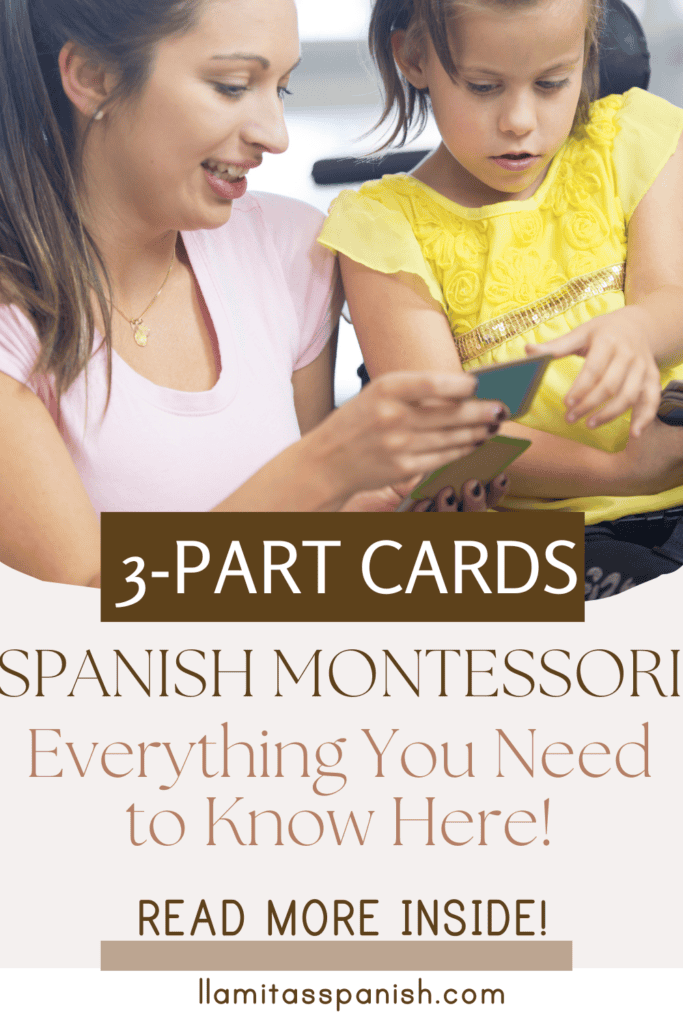
There are so many benefits of using Montessori nomenclature cards in your classroom. For example:
- Letter and word recognition. Montessori 3-part cards are an effective way to build letter and word recognition, whether you have preschoolers or emergent readers.
- Emergent literacy awareness. They promote and reinforce an understanding of how written language is used in our everyday life.
- Tactile learning. By stimulating the senses and allowing exploration, kids are better able to understand and remember new information.
- Independent and hands-on. Like with tactile learning, kids will learn best when they can interact with and manipulate materials.
- Versatile. Three-part Montessori cards are especially helpful when you have children with different learning styles. You can adapt activities and allow your children to explore in a way that works for them.
Llamitas Spanish Level 1 Curriculum
Llamitas Spanish® is the perfect homeschool Spanish curriculum for families with preschool and elementary age children. Our Level 1 Curriculum includes everything you need to teach your kids Spanish at home—even if you have no prior experience!
Our curriculum was intentionally designed with young learners’ needs and interests in mind. You’ll find plenty of Montessori-inspired elements such as 3-part cards, authentic music, and lessons in language, culture, mathematics, and sensorial learning to develop the absorbent mind.
With Llamitas Spanish®, they’ll learn Spanish through exciting thematic lessons that build phonemic awareness, early math skills, emergent literacy, and fine and gross motor skills.
Plus, all you have to do is open and go! No planning or prep necessary.

